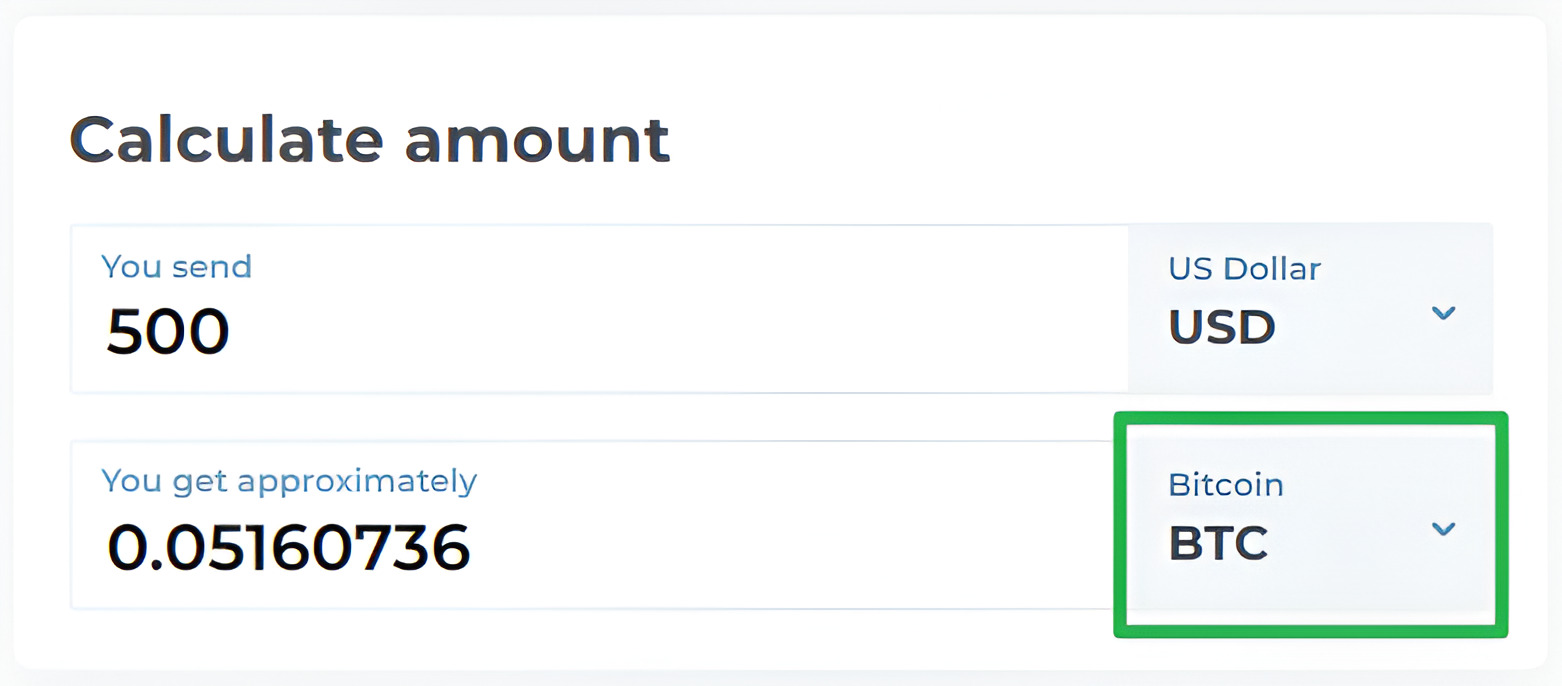Introduction
Bitcoin, the first decentralized cryptocurrency, has revolutionized the way we view and transact with digital assets. Since its inception in 2009, Bitcoin has gained widespread popularity and its value has soared to unprecedented levels. One question that often arises in the minds of individuals interested in Bitcoin is, “How much Bitcoin is there?”
To answer this question, we must delve into the process of Bitcoin creation, understand the concept of Bitcoin supply, and explore the factors that influence the availability of this digital currency. In this article, we will explore the current state of Bitcoin’s supply, the impact of the halving process on its availability, and the comparison of Bitcoin’s supply with other popular cryptocurrencies.
As we dive into the world of Bitcoin supply, it’s important to note that the information provided is accurate at the time of writing, but the numbers may vary slightly due to ongoing transactions. Now, let’s embark on our journey to uncover the fascinating world of Bitcoin supply and explore the dynamics that govern its existence.
How Bitcoin is Created
Bitcoin is created through a process known as mining. Unlike traditional currencies that are printed by central banks, Bitcoin is generated by solving complex mathematical problems. Miners use powerful computers to perform complicated calculations that validate transactions and add them to the blockchain, which is the public ledger that records all Bitcoin transactions.
The mining process involves miners competing with each other to solve these mathematical puzzles. The first miner to solve the problem and validate the transaction is rewarded with a certain amount of newly created Bitcoin. This process is crucial for maintaining the integrity and security of the Bitcoin network.
The rate at which new Bitcoins are created is predetermined and follows a set schedule. Approximately every 10 minutes, a new block of transactions is added to the blockchain, and the successful miner receives a reward in the form of newly minted Bitcoin. This reward acts as an incentive for miners to continue validating transactions and maintaining the network.
In the early days of Bitcoin, the reward for mining a new block was 50 Bitcoin. However, as per the protocol established by Bitcoin’s creator, Satoshi Nakamoto, this reward is halved approximately every four years. This mechanism, known as the halving process, ensures that the supply of Bitcoin is limited and becomes scarcer over time.
The halving process continues until the maximum supply of 21 million Bitcoins is reached. This predetermined cap ensures that Bitcoin remains a finite resource, unlike traditional fiat currencies that can be printed by central banks at will. Currently, over 18 million Bitcoins have been mined, representing the majority of the total supply that will ever exist.
As the supply of new Bitcoins decreases over time due to the halving process, the rate of creation slows down. By design, this scarcity is intended to increase the value of each Bitcoin, making it a deflationary asset.
How Much Bitcoin is Currently in Existence
As of the time of writing, the total supply of Bitcoin is over 18 million. This means that more than 85% of the maximum supply of 21 million Bitcoins has already been mined. The remaining Bitcoin will be gradually created over the next few years through the mining process.
The current supply of Bitcoin can be easily tracked and verified by anyone through the blockchain. The blockchain serves as a transparent ledger that records all transactions ever made in Bitcoin. Each transaction contains information about the sender, receiver, and the amount of Bitcoin transferred, providing a clear picture of the circulating supply.
It’s important to note that the rate at which new Bitcoins are created decreases over time due to the halving process. Initially, the block reward was 50 Bitcoin, which was halved to 25 Bitcoin in 2012. In 2016, it halved again to 12.5 Bitcoin, and most recently, in May 2020, it reduced to 6.25 Bitcoin.
The decreasing rate of new Bitcoin creation has a direct impact on the availability of new supply in the market. This scarcity, combined with the growing adoption of Bitcoin, has led to increased demand and contributed to its value appreciation over the years.
It’s worth mentioning that while the total supply of Bitcoin is over 18 million, not all of these Bitcoins are actively circulating in the market. Some may have been lost due to lost private keys, forgotten wallets, or early Bitcoin owners who have passed away without leaving access to their Bitcoins. It is estimated that a significant amount of Bitcoin is considered lost or inaccessible, further reducing the effective supply.
To accurately determine the amount of Bitcoin that is actively circulating, we can look at on-chain data and analyze the movements of Bitcoin in different wallets. This analysis provides insights into the distribution of Bitcoin and helps us understand the concentration of Bitcoin amongst whales or large holders.
In the next section, we will explore the concept of Bitcoin lost or inaccessible in more detail, as well as delve into the distribution of Bitcoin amongst different holders and assess its impact on the market.
The Halving Process and its Impact on Bitcoin Supply
The halving process is a key aspect of Bitcoin’s supply dynamics. Every approximately four years, the block reward for miners is halved, reducing the rate at which new Bitcoins are created. This process is built into the Bitcoin protocol and serves to control inflation and gradually decrease the rate of Bitcoin creation over time.
The halving process has a significant impact on the available supply of Bitcoin in the market. As the block reward decreases, the number of newly minted Bitcoins entering circulation also decreases. This decrease in the rate of supply growth creates scarcity and can influence the value of Bitcoin.
Historically, each halving event has led to significant price increases in Bitcoin. In the months and years following a halving, there has been observed a surge in demand for Bitcoin, resulting in upward price movements. This phenomenon can be attributed to the reduced rate of new supply entering the market combined with increasing demand from investors and users.
The halving process aligns with Bitcoin’s deflationary nature. As the supply growth slows down, the available Bitcoin becomes scarcer, potentially driving up its price. This scarcity mindset can incentivize people to accumulate and hold Bitcoin as a store of value, further reducing the circulating supply available for trading.
The decreased rate of new supply through halving also has an impact on the mining industry. Miners who rely heavily on block rewards for their profitability may be affected by the reduced rewards. As the block reward becomes less lucrative, miners may need to optimize their operations, upgrade their equipment, or find alternative revenue streams to remain profitable.
While the halving process initially results in a reduced rate of supply growth, it eventually leads to a point where no new Bitcoins are created. The maximum supply of 21 million Bitcoins will be reached, and at that point, the only way to acquire Bitcoin will be through trading with existing holders.
As the halving process continues, the supply of newly created Bitcoins becomes scarcer, potentially driving the price higher. This scarcity narrative has contributed to Bitcoin’s perceived value as a deflationary asset and has attracted investors looking to hedge against inflation and diversify their portfolios.
In the next section, we will explore the concept of lost or inaccessible Bitcoin, as well as analyze the distribution of Bitcoin amongst different holders.
Bitcoin Lost or Unavailable
One interesting aspect of Bitcoin supply is the notion of lost or inaccessible Bitcoin. Due to the unique nature of cryptocurrencies, where users control their own private keys, there have been instances where Bitcoin has become permanently lost or unavailable.
Bitcoin can be lost in various ways. In some cases, users may misplace or forget the private keys required to access their Bitcoin wallets. Without these keys, the Bitcoin held in those wallets becomes inaccessible and effectively lost. It’s estimated that a significant amount of Bitcoin has been lost in this manner, particularly in the early years when awareness and security practices were still developing.
Additionally, some Bitcoin may be lost due to hardware failures or technological issues. If a user’s storage device or hardware wallet becomes damaged or corrupted, the Bitcoin stored on it may become irretrievable. This highlights the importance of implementing robust backup strategies to safeguard against such losses.
Moreover, there have been instances where individuals have passed away without sharing access to their Bitcoin holdings, resulting in those Bitcoins becoming effectively lost. In some cases, family members or heirs may not be aware of the existence of these holdings or may be unable to access them due to lack of access credentials.
The exact amount of lost or unavailable Bitcoin is difficult to determine. Estimates vary, but it is believed that a significant portion of the total Bitcoin supply may never be recovered or put back into circulation. This effectively reduces the available supply of Bitcoin in the market.
The concept of lost Bitcoin adds an intriguing dynamic to the scarcity and value proposition of Bitcoin. With a limited supply of 21 million, every lost Bitcoin contributes to the increased scarcity and potential upward pressure on its value. As more Bitcoin becomes lost or inaccessible, the remaining supply becomes even scarcer, potentially driving up the price as demand continues to grow.
In the next section, we will explore the distribution of Bitcoin amongst different holders and its potential impact on the market.
Bitcoin in Circulation vs. Bitcoin Held by Whales
When considering the distribution of Bitcoin, it is important to differentiate between Bitcoin in circulation and Bitcoin held by whales. Bitcoin in circulation refers to the amount of Bitcoin readily available for buying, selling, and transacting in the market. On the other hand, Bitcoin held by whales refers to large amounts of Bitcoin held by individual entities or addresses.
Bitcoin’s decentralized nature means that anyone can own and hold Bitcoin. However, the distribution of Bitcoin is not evenly spread among all users. Just as in traditional financial markets, there are individuals or entities known as whales who hold significant amounts of a particular asset, in this case, Bitcoin.
Whales can impact the market due to their ability to influence supply and demand dynamics. If a whale decides to buy or sell a large amount of Bitcoin, it can have a significant impact on the overall market sentiment and price movement. The actions of whales are closely monitored and analyzed by the cryptocurrency community.
However, it’s important to note that whales do not necessarily dictate the entire Bitcoin market. While their actions may cause short-term fluctuations in price, the decentralized nature of Bitcoin allows for various market participants to influence the overall market direction.
Analyzing the distribution of Bitcoin among holders reveals interesting insights. Data suggests that a significant portion of the total Bitcoin supply is held by a relatively small number of addresses, commonly referred to as whale addresses. These addresses hold a substantial amount of Bitcoin, and their activities can shape the market dynamics.
It is important to approach the topic of whale holdings with caution, as the landscape of Bitcoin holders is dynamic and constantly changing. Just as new investors and users enter the market, existing holders may adjust their positions. Additionally, the identity of Bitcoin holders remains largely anonymous, making it challenging to accurately determine the intentions and actions of individual whales.
The concentration of Bitcoin among a relatively small number of addresses does not necessarily imply manipulation or centralized control. It is inherent in any financial market for a subset of participants to hold a larger share of the total asset. However, the decentralized nature of Bitcoin and the growing involvement of institutional investors and retail traders contribute to the diversification of its distribution.
Understanding the distribution of Bitcoin can provide insights into potential market trends and investor sentiment. However, it is crucial to consider multiple factors and indicators when analyzing price movements and market behavior.
In the next section, we will explore how Bitcoin supply compares to other popular cryptocurrencies and discuss the market impact of Bitcoin’s supply dynamics.
Comparing Bitcoin Supply to Other Cryptocurrencies
Bitcoin’s supply dynamics set it apart from many other cryptocurrencies in existence. With a maximum supply cap of 21 million, Bitcoin is designed to be a finite resource. This scarcity, combined with its high market demand, has contributed to its value appreciation over the years.
When comparing Bitcoin to other cryptocurrencies, it becomes evident that not all digital assets have the same supply constraints. Many cryptocurrencies have no maximum supply limit, meaning that new tokens can be continuously created. This difference in supply dynamics can have a significant impact on the perceived value and potential market growth of each cryptocurrency.
For example, Ethereum, the second-largest cryptocurrency by market capitalization, currently does not have a fixed maximum supply. However, there are plans to transition Ethereum to a proof-of-stake mechanism that may introduce a supply cap. This change is expected to impact Ethereum’s supply dynamics and potentially influence its future price movements.
Some cryptocurrencies, such as Ripple (XRP), have a pre-mined supply, where a certain amount of tokens is created and held by the project creators or early investors. This pre-mined supply can affect the perceived decentralization and distribution of the cryptocurrency, as some argue that a large amount of tokens held by a limited number of entities can potentially manipulate the market.
Furthermore, the market perception of scarcity can also play a role in determining the value of a cryptocurrency. It is not only the actual supply but also the perceived availability and demand that contribute to market dynamics. In some cases, cryptocurrencies with large total supplies but low circulating supplies may be valued more due to their perceived scarcity.
Overall, Bitcoin’s supply dynamics, with its capped supply and decreasing issuance over time, position it as a unique and highly sought-after cryptocurrency. While other cryptocurrencies may have different supply mechanisms, the scarcity of Bitcoin has played a significant role in its market performance and adoption.
Understanding the supply dynamics of various cryptocurrencies can help investors assess their potential value and market trends. However, it’s important to conduct thorough research and analysis of each cryptocurrency’s fundamentals, adoption, and utility to make informed investment decisions.
In the next section, we will dive into the market impact of Bitcoin’s supply dynamics and explore the factors that influence Bitcoin’s supply growth or contraction.
Market Impact of Bitcoin Supply
The supply dynamics of Bitcoin have a significant impact on its market performance and the behavior of investors and traders. As the supply of Bitcoin becomes scarcer over time, it can influence the price and market sentiment in several ways.
One of the key factors driving Bitcoin’s market impact is its perceived scarcity. With a maximum supply of 21 million, the decreasing rate of new Bitcoin creation through the halving process contributes to this perception. As the available supply of Bitcoin becomes scarcer, the demand may increase, potentially leading to upward pressure on the price.
The scarcity narrative of Bitcoin, combined with its decentralized nature, positions it as a potential hedge against inflation and economic uncertainties. Investors seeking alternative assets with limited supply may turn to Bitcoin as a store of value, further driving up its demand.
The market impact of Bitcoin’s supply dynamics also extends to its volatility. The relatively small circulating supply, coupled with high demand, makes Bitcoin susceptible to significant price fluctuations. This volatility attracts traders and speculators who aim to profit from these price movements.
Furthermore, the reduction in the rate of new Bitcoin issuance through the halving process can create a psychological effect on market participants. The anticipation and aftermath of each halving event have historically been associated with bullish price movements and increased market activity.
However, it’s important to note that while the supply dynamics contribute to Bitcoin’s market impact, they are not the sole determining factor. Bitcoin’s price is influenced by a multitude of factors, including market sentiment, macroeconomic indicators, regulatory developments, and technological advancements.
Additionally, the market impact of Bitcoin’s supply dynamics can also be influenced by external factors, such as the entry of institutional investors into the market, regulatory changes, and global economic conditions. The interplay between supply and demand dynamics, investor sentiment, and external factors ultimately determines the market performance of Bitcoin.
As Bitcoin continues to capture mainstream attention and adoption, its supply dynamics and market impact will remain important considerations for investors and observers alike. Understanding how supply scarcity, halving events, and market sentiment interact can provide valuable insights into Bitcoin’s price movements and future market developments.
In the next section, we will explore the various factors that influence the supply growth or contraction of Bitcoin, shedding light on the dynamics that shape its availability in the market.
Factors Influencing Bitcoin Supply
Bitcoin supply is influenced by a variety of factors that affect its creation, circulation, and availability in the market. Understanding these factors can provide insights into the dynamics that shape the supply of Bitcoin. Here are some key factors that influence Bitcoin supply:
1. Halving Events: The halving process, which occurs approximately every four years, has a significant impact on Bitcoin’s supply. During each halving event, the block reward for miners is reduced by half, leading to a decrease in the rate of new Bitcoin creation. This process creates scarcity and contributes to the gradual reduction in Bitcoin’s available supply over time.
2. Mining Difficulty: Bitcoin mining difficulty is adjusted approximately every two weeks to maintain a consistent rate of block creation. As more miners join the network, the difficulty increases, and vice versa. This adjustment ensures that new blocks are added to the blockchain approximately every 10 minutes, regardless of changes in miner participation. The mining difficulty has a direct impact on the rate of Bitcoin supply growth.
3. Lost or Inaccessible Bitcoin: As mentioned earlier, a significant amount of Bitcoin has been lost or become inaccessible due to various reasons, such as forgotten private keys or hardware failures. These lost Bitcoins reduce the effective supply available in the market, making the existing supply even scarcer.
4. Wallet Distribution: The distribution of Bitcoin amongst different wallets and addresses can impact its availability and market dynamics. If a large number of Bitcoins are concentrated in a few addresses or held by a small group of investors, it can potentially influence market sentiment and liquidity.
5. Adoption and User Activity: The level of adoption and user activity in the Bitcoin network can affect the velocity of Bitcoin, i.e., how frequently it is used in transactions. Higher adoption and increased user activity can result in more Bitcoins changing hands, potentially impacting the supply available for trading.
6. Regulatory Environment: Regulatory developments and government interventions can influence the availability and flow of Bitcoin. Changes in regulations, such as bans or strict regulations on cryptocurrency exchanges, may impact the liquidity and trading volume of Bitcoin, consequently affecting its supply availability.
7. Market Demand and Investor Sentiment: The overall market demand for Bitcoin, influenced by investor sentiment and macroeconomic factors, can drive supply dynamics. If demand outstrips supply, it can lead to price appreciation and potential scarcity-driven buying behavior.
These factors, both individually and in combination, influence the supply growth or contraction of Bitcoin. The interplay between these factors and market dynamics contributes to the overall availability and perceived value of Bitcoin.
In the next section, we will summarize the key points discussed and provide concluding remarks on the importance of understanding Bitcoin’s supply dynamics.
Conclusion
Understanding the supply dynamics of Bitcoin is crucial for anyone interested in this groundbreaking digital asset. Bitcoin’s supply is built on a predetermined schedule, with a maximum supply of 21 million, and its availability is influenced by various factors.
The halving process plays a significant role in shaping Bitcoin’s supply. The decreasing rate of new Bitcoin creation through halving events leads to scarcity, drives up demand, and impacts the market price. This scarcity narrative, combined with the decentralized nature of Bitcoin, positions it as a potential store of value and hedge against inflation.
Bitcoin’s supply is also impacted by the presence of lost or inaccessible Bitcoin, which reduces the effective supply in the market. The distribution of Bitcoin amongst various holders, including whales, can influence market sentiment and liquidity, though it does not necessarily dictate the entire market.
It’s important to compare Bitcoin’s supply dynamics with other cryptocurrencies to understand its unique features, such as its capped supply and decreasing issuance rate. These characteristics differentiate Bitcoin from many other digital assets in the market and contribute to its perceived value as a scarce and deflationary cryptocurrency.
Factors such as mining difficulty adjustments, regulatory environments, user activity, and market demand all play a role in shaping Bitcoin’s supply landscape. These dynamic factors interact with each other and contribute to the overall availability and price movements of Bitcoin.
In conclusion, by grasping the dynamics of Bitcoin supply, investors, traders, and enthusiasts can gain valuable insights into its market behavior, potential price movements, and overall adoption trajectory. It is essential to stay informed about halving events, adoption trends, regulatory changes, and market sentiment to make informed decisions in the ever-evolving world of Bitcoin.

























